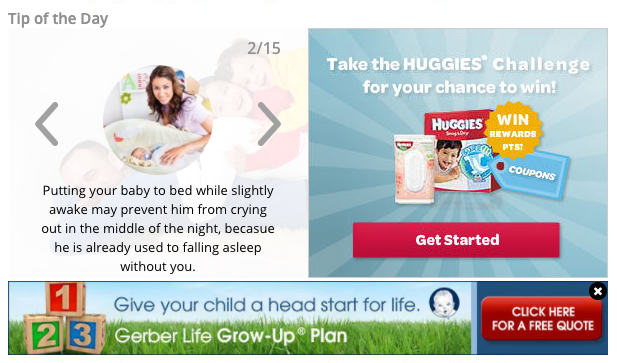When operating an ad-supported website, publishers tend to stick with traditional forms of monetization like display ads and native video. However, an overlooked yet powerful revenue driver are interactive ad units. In this article, we will explore what Interactive ad units can do, how they work, and if you should consider using them.
What are interactive ad units?
In short, an interactive ad unit is a powerful ad format that allows your visitors to engage with quizzes, facts and tips.
There are many types of interactive ad units which we will outline in this article. The most popular type uses a “did you know” format. This allows users to browse through different facts related to the website’s content.
An interactive ad unit will display both content and ads. In order to see an ad, the user will first need to engage with the unit. The ad integrated into the interactive unit usually achieves a much higher CPM value because its visibility is higher than a regular display unit.

Various sizes and styles to choose from

Quizzes
A great choice to excite and challenge your audience. The effect of offering a true or false choice triggers the user’s problem-solving instinct. The counter motivates users to answer more than just one question. In many cases, users go way beyond the initial round of questions. This activity leads to higher time-on-site and higher CPMs.

On This Day
This unit looks up the date and shows events that happened previously on this day in the past. It’s a very popular choice as it will always show interesting events regardless of the site’s vertical or content.

Facts
Curiosity is the key driver for this ad unit. It fits perfectly into blogs or sites with a high time-on-site. The unit provides interesting facts covering various topics including sport, tech, research, science and lifestyle. The ad behaves in a similar way to “On This Day” but the content is matched to the site before implementation.

Tips
Here the idea is to provide the user with knowledge that improves their experience on your site. If the user leaves having learned something new from your site, they are more likely to come back for additional tips.
Should you use interactive ad units?
Publishers have seen incredible results with interactive ad units – 3-4x the CPM of regular display units. This type of advertising is not very common, so visitors are more open and curious about it. Depending on the configuration, the ad is not immediately interpreted as such and is perceived as content. Combine that with the element of fun (e.g. quiz-style units) and the result is a positive impact for your audience.
The more space you are willing to dedicate to an interactive ad unit the better. While it is possible to run this type of ad in a 300×250 format, the information, content and navigation buttons tend to look crowded. If your site layout allows, you can achieve better results with a larger unit such as a 300×600 or 336×280.
Snigel brings additional value by running header bidding (a realtime auction) in the interactive ad unit. This creates additional revenue for each impression. If you haven’t heard of header bidding and you would like to learn more, check out our guide: What’s the Difference between Header Bidding and AdSense?
Technology, performance and additional features
An interactive ad unit will use slightly more browser resources than a standard display unit. However, the lightweight script is barely noticeable when looking at the RAM/CPU performance and is executed by modern browsers without any issues.

To enable interactive ads, you can either use a single line of javascript, hardcoded into the site or Google Ad Manager.
In order to improve load times, the JS is served via a CDN network. If you’re using a header bidding solution like Snigel’s AdEngine header bidding solution, the time to bid request can be limited to match your page load needs.
The verdict
Interactive ad units are a great addition to the many monetization options publishers have access to when working with Snigel. They are easy to implement, lightweight on both network load as well as memory/cpu/gpu performance, and they capture the attention of users. Interactive units are often used in combination with header bidding. Check out or what is header bidding guide to learn more.
Interactive ad units can easily bring in 3-4x the CPM of display units, especially when combined with Snigel’s header bidding solution. For your audience, it’s a refreshing change over traditional display ads, creating a satisfying result for both the publisher and the user.
If you want to learn more about Snigel’s interactive ad units or header bidding, click the button below to get started.









